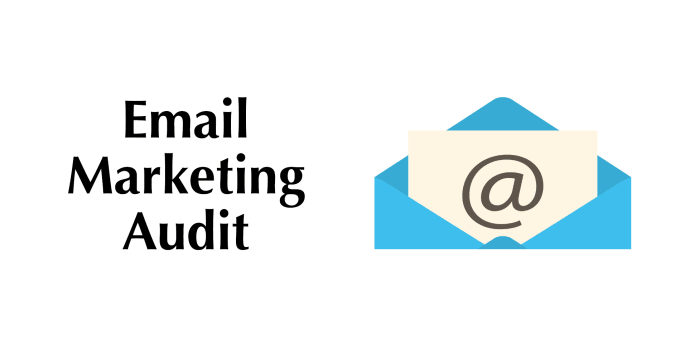
In the rapidly evolving digital landscape, email marketing continues to be a powerful tool for businesses seeking to engage customers and drive conversions. To ensure the effectiveness of email marketing efforts, you will need to conduct a regular email marketing audit. This assessment allows businesses to optimize their strategies, enhance performance, and deliver impactful campaigns that resonate with their target audience.
In this article, we explore what an email marketing audit is, the significance of conducting an email marketing audit, and how it can lead to enhanced results and successful email marketing endeavors.
What Is an Email Marketing Audit?

An email marketing audit thoroughly evaluates an organization’s email marketing efforts, aiming to enhance its performance and achieve better results. This process involves analyzing various aspects, including email campaigns, subject lines, email performance metrics, marketing automation platforms, and email deliverability.
A successful email marketing audit involves a comprehensive email audit checklist, assessing email content, design elements, and list segmentation strategies. It also considers key performance indicators, such as click-through rates, customer engagement, and conversions.
An email compliance audit also ensures adherence to email authentication protocols, minimizing spam complaints and enhancing email accessibility. Email marketers can measure email performance across major email clients like Apple Mail using analytics tools like Google Analytics.
Why Should You Conduct an Email Marketing Audit?
Conducting an email marketing audit is crucial for optimizing your email marketing strategy and achieving campaign success. An email marketing audit involves thoroughly evaluating all aspects of your email marketing efforts to identify strengths, weaknesses, and areas for improvement.

By performing regular email marketing audits, you can assess the performance of your email campaigns, email deliverability, and email marketing program. Analyzing key performance indicators, such as click-through rates and email metrics, helps measure the effectiveness of your email marketing efforts.
Additionally, an email marketing audit allows you to review your email content, subject lines, and design elements to ensure they resonate with the target audience and align with the marketing strategy. It helps ensure your emails are relevant, engaging, and consistent with your branding.
Auditing your email automation processes and marketing automation platforms enables you to optimize automated campaigns, making them more efficient and personalized. It also includes reviewing email accessibility and ensuring all subscribers can access and engage with your emails regardless of their device or disability.
By conducting an email compliance audit, you can adhere to email authentication protocols and minimize spam complaints, ensuring your emails reach subscribers’ inboxes and comply with legal requirements.
Different Types of Email Marketing Audits

1. Email Marketing Performance Audit
The email marketing performance audit focuses on evaluating the performance of your email marketing campaigns. It includes analyzing key performance indicators (KPIs) like open rates, click-through rates, conversion rates, and engagement metrics. The goal is to assess the effectiveness of your email marketing efforts and point out areas for improvement in your email marketing strategy.
2. Email Accessibility Audit
The email accessibility audit ensures your emails are accessible to all recipients, including those with disabilities. It involves reviewing email templates, design elements, and content to comply with accessibility standards. Improving email accessibility enhances user experience and widens your audience reach.
3. Email Deliverability Audit
The email deliverability audit assesses the factors affecting email deliverability, ensuring that your emails land in subscribers’ inboxes, not their spam folders. It includes checking sender reputation, authentication protocols, list hygiene, and monitoring bounce rates.
4. Email Design Audit
This design audit examines the visual elements of your emails, including layout, branding, and imagery. It ensures that your emails have a professional and consistent design, reflecting your brand identity and maintaining a positive user experience across various devices and email clients.
5. Email Code Audit
The email code audit involves reviewing your email templates’ HTML and CSS code. It aims to identify any coding issues that may affect email rendering across different email clients and devices. Ensuring proper coding enhances email appearance and functionality.
6. Email Compliance Audit
An email compliance audit ensures that your email marketing practices adhere to relevant laws and regulations, such as anti-spam laws (e.g., CAN-SPAM, GDPR). It involves checking unsubscribe processes, privacy policies, and consent management to avoid legal pitfalls.
7. Email Automation Audit
The email automation audit evaluates the performance of your automated email campaigns and workflows. It includes reviewing triggered email campaigns, segmentation strategies, and personalization efforts. Optimizing marketing automation platforms and workflows enhances efficiency and personalization.
8. Comprehensive Email Audit
A comprehensive email audit encompasses all aspects of your email marketing program. It combines elements from performance, accessibility, deliverability, design, code, compliance, and automation audits. This holistic approach provides a comprehensive overview of your email marketing efforts, enabling you to identify strengths and weaknesses more effectively.
Conducting these different types of email marketing audits is indispensable to optimizing your email marketing strategy, improving performance, and maintaining consistent branding. By regularly assessing and addressing areas for improvement, you can enhance customer engagement, boost sales, and foster stronger relationships with your subscribers.
When Should You Run an Email Marketing Audit?

You should run an email marketing audit regularly and at specific key points in your email marketing journey. Here are the ideal times to conduct an email marketing audit:
1. Quarterly Audits
Perform a thorough email marketing audit every quarter. This will help you track the performance of your email campaigns, review the effectiveness of subject lines, content, and design elements, and make necessary adjustments to your email strategy. Use an email marketing audit checklist to ensure a comprehensive assessment.
2. After Major Campaigns
Conduct an audit after running significant email campaigns, such as product launches or seasonal promotions. Analyze the success of these campaigns to understand what worked well and identify areas for improvement in future efforts.
3. When Switching Email Service Providers
If you plan to switch your email service provider or marketing automation platform, audit your email marketing before transitioning. This ensures that all data, automated emails, and workflows are correctly transferred to the new platform.
4. Annually or Bi-Annually
Perform a more comprehensive audit annually or bi-annually. This entails evaluating your entire email marketing program, reviewing transactional emails, and analyzing website metrics related to email campaigns. Pay attention to code and design elements to ensure consistent branding.
5. Changes in Marketing Strategy
When there are significant changes in your marketing strategy or target audience, run an email marketing audit to align your email campaigns with the new direction.
6. Involvement of New Team Members
Whenever you bring new members to your email marketing team, conduct an audit to familiarize them with your email program and assess how they can improve it.
How to Do an Email Marketing Audit?

Step 1: Prepare and Define Objective
Before starting the email marketing audit, clearly outline the goals and objectives you want to achieve. Define the scope of the email audit, which may include specific campaigns, time frames, or performance metrics to evaluate. Gather all relevant information, such as email marketing campaigns, email templates, and reports.
Step 2: Evaluate Email Marketing Strategy
Review your email marketing strategy to ensure it aligns with your overall goals. Assess your target audience, segmentation approach, and customer relationship management practices. Examine the effectiveness of your subject lines, email content, and call-to-action ( CTA) in engaging subscribers.
Step 3: Analyze Email Performance Metrics
Measure key performance indicators (KPIs) like open, click-through, and conversion rates. Use email analytics tools to gain insights into subscriber behavior and identify successful email campaigns. Compare your performance against industry benchmarks to gauge your email marketing performance.
Step 4: Check Email Deliverability and Compliance
Verify email deliverability by assessing bounce rates and spam complaints. Review email authentication protocols (SPF, DKIM, DMARC) to improve email deliverability. Conduct an email compliance audit to ensure your email marketing practices are in accordance with relevant laws and regulations.
Step 5: Assess Automation and Personalization
Evaluate your use of marketing automation platforms and the performance of automated email campaigns. Analyze triggered email campaigns and personalized content based on subscriber behavior and preferences. Ensure your email workflow is efficient and leads to effective communication with subscribers.
Step 6: Review Email Design and Accessibility
Examine your email templates’ design and layout to make sure they are visually appealing and consistent with your branding. Perform an email accessibility audit to make sure your emails are accessible to all recipients, including those with disabilities. Test email rendering across different email clients and devices to ensure optimal display.
Email Marketing Audit Checklist
- Email List and Segmentation: Review the quality and size of your email subscriber list. Assess your segmentation strategy to ensure relevant content delivery to different audience segments.
- Email Content and Design: Evaluate the effectiveness and relevance of your email content and copy. Review email design elements, including layout, branding, and imagery, to maintain a consistent and professional look.
- Subject Line and Preheader: Analyze the impact and engagement level of subject lines and preheaders. Optimize them for better open rates and subscriber interest.
- Call-to-Action (CTA): Assess the clarity and effectiveness of CTAs in your emails. Ensure they are compelling and guide subscribers toward your desired action.
- Email Deliverability and Bounce Rates: Check email deliverability rates and identify potential deliverability issues. Monitor and address high bounce rates to maintain a healthy email list.
- Email Automation and Triggered Emails: Review the performance and effectiveness of your automated email sequences. Ensure that triggered email campaigns are relevant and personalized.
- Email Performance Metrics: Analyze key performance indicators (KPIs) such as open rates, click-through rates, conversion rates, and unsubscribe rates. Use these metrics to measure the success of your email campaigns.
Tools for Email Marketing Audits

Performing email audits requires the right tools to gather data, analyze performance, and gain valuable insights into your email campaigns. Here are some detailed and relatable tools that can help you conduct effective email marketing audits:
- Email Analytics Platforms: Tools like Google Analytics, Mailchimp Analytics, or HubSpot Email Analytics provide comprehensive data on key performance indicators (KPIs) like open rates, click-through rates, and conversions. These platforms allow you to track email campaign performance and make data-driven decisions.
- Email Testing Tools: Tools like Litmus and Email on Acid help you test how your emails render across various email clients and devices. These tools ensure that your emails look and function as intended, offering a seamless user experience.
- Marketing Automation Platforms: Platforms like Mailchimp, ActiveCampaign, and HubSpot offer powerful marketing automation capabilities. They enable you to set up automated email sequences, segment your audience, and personalize your email campaigns.
- Email Deliverability Tools: Tools like GlockApps allow you to check your sender reputation and inbox placement rates. These tools help you identify deliverability issues and improve your email deliverability.
- Email Compliance Checkers: Compliance tools like Email on Acid’s Spam Testing feature and Litmus’ Pre-Send Checks help ensure your emails comply with anti-spam laws and email authentication protocols.
- Email Accessibility Checkers: Tools like Email Accessibility provide insights into the accessibility of your emails for people with disabilities. They highlight areas that may need improvement for better inclusivity.
- Competitor Analysis Tools: Tools like Owletter and SpyFu help you conduct competitor analysis, allowing you to gain insights into your competitors’ email marketing strategies and identify potential opportunities.
- Email Design and Rendering Tools: Platforms like BeeFree and Chamaileon enable you to create and preview email templates easily. These tools help ensure that your email design is visually appealing and consistent.
- Email Audit Checklists: While not a tool per se, email marketing audit checklists (often provided by email marketing service providers or marketing agencies) guide you through the auditing process, ensuring that you cover all relevant aspects.
- Collaboration and Communication Tools: Efficient collaboration and communication are essential during an email audit. Tools like Slack or Microsoft Teams facilitate seamless communication within your email marketing team.
By using these tools, you can conduct in-depth and insightful email marketing audits. They provide the necessary data and analysis to optimize your email campaigns, enhance customer engagement, and achieve better results. Remember to choose tools that suit your needs and integrate well with your existing email marketing infrastructure.
Frequently Asked Questions on Email Marketing Audit

1. How do you conduct an email audit?
Conducting an email audit involves evaluating various aspects of your email marketing campaigns. Start by setting intelligible goals and objectives for the audit. Gather relevant data and metrics, including performance metrics, email content, design, and deliverability statistics. Review your email automation and workflows, and ensure compliance with relevant laws. Analyze key performance indicators (KPIs) like open rates, click-through rates, and conversions. Create an action plan based on the audit findings and implement necessary improvements.
2. What is an example of a marketing audit?
A good example of a marketing audit is when a company evaluates its marketing efforts to assess the performance and effectiveness of its current marketing strategies and campaigns. This may include analyzing market research data, reviewing marketing materials and advertisements, assessing customer feedback, and examining sales and revenue data.
3. How much does an email marketing audit cost?
The cost of an email marketing audit can differ based on factors such as the scope of analysis, the size of the email list, and the expertise of the marketing agency or consultant conducting the audit. On average, an email marketing audit may cost anywhere from a few hundred to a few thousand dollars. Some agencies offer fixed-price audit packages, while others provide custom quotes based on specific requirements.
4. What are the 6 components of a marketing audit?
The six components of a marketing audit are internal environment analysis, external environment analysis, target market analysis, marketing strategy evaluation, marketing mix analysis, and performance and results measurement.
The internal environment analysis assesses the organization’s internal marketing capabilities and strategies. The external environment analysis evaluates external factors that influence marketing efforts. Target market analysis involves understanding the target market and its needs. Marketing strategy evaluation reviews the effectiveness of current marketing strategies. Marketing mix analysis assesses product, price, place, and promotion strategies. Performance and results measurement involves evaluating key performance indicators (KPIs) and marketing effectiveness.
